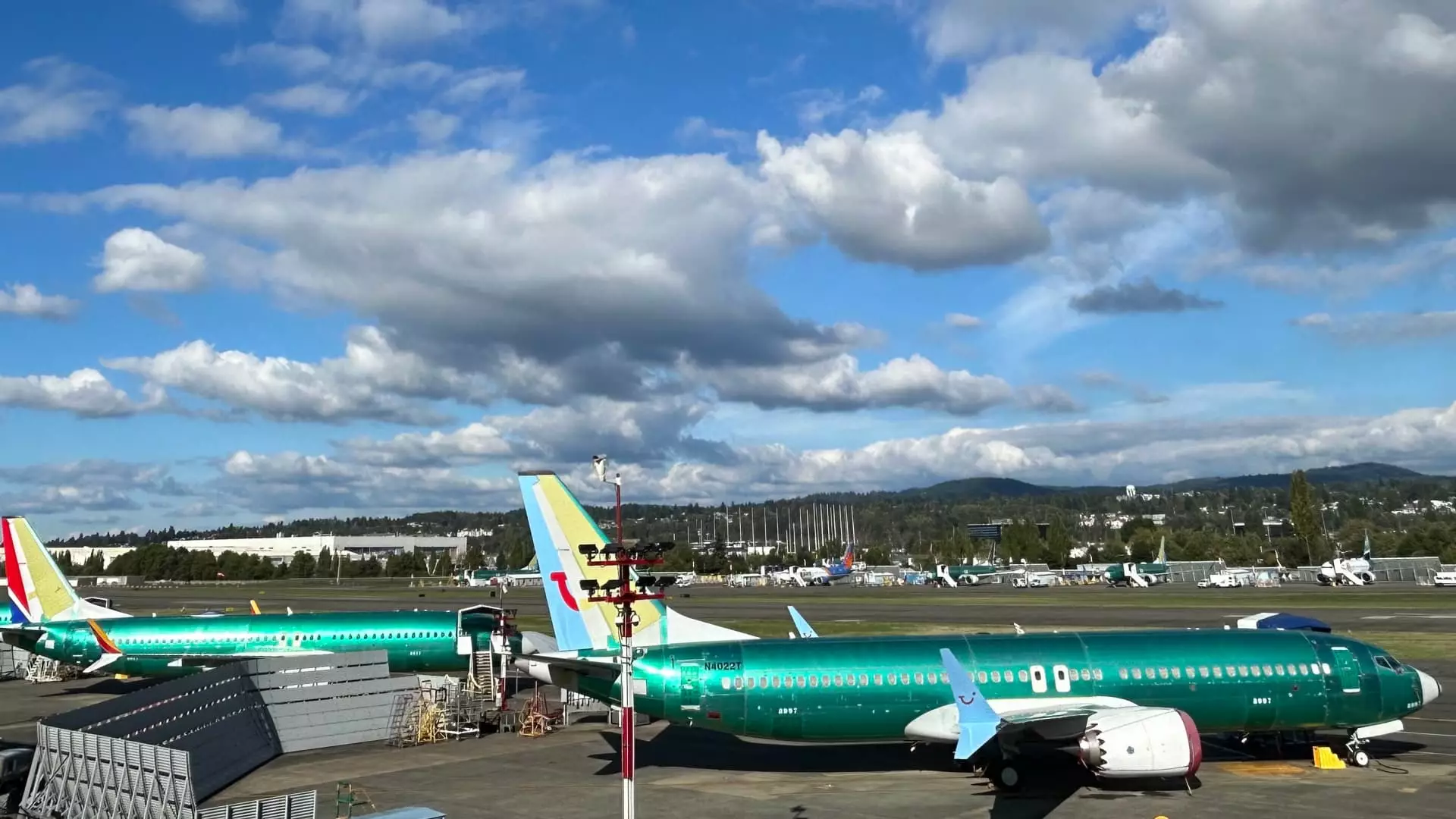The construction of the next generation of Air Force One has become emblematic of the larger challenges facing Boeing amidst political, financial, and logistical turbulence. Recently, President Donald Trump’s dissatisfaction over the delayed delivery of two Boeing 747s intended for this role has cast a spotlight on the continuing woes of the aviation giant. Trump’s frustration echoes a broader sentiment among airline customers who have experienced similar delays, leading to questions about Boeing’s operational efficiency and strategic direction.
The contract for the new Air Force One, originally negotiated at around $4 billion, now sees cost overruns exceeding $2 billion. This delay not only highlights the bureaucratic complexities inherent in military contracting but also raises doubts about whether these planes will ever be operational during Trump’s current term. This situation underscores not just a failure in project management, but also the fragile balance Boeing must maintain in delivering on its promises to both government and civilian airline customers.
In a surprising twist, tech entrepreneur and founder of SpaceX, Elon Musk, has become involved in expediting the project. This partnership illustrates the unconventional approach Boeing is embracing in an effort to streamline production timelines and tackle non-essential constraints that are dragging the project down. Kelly Ortberg, Boeing’s CEO, acknowledged Musk’s abilities at a recent Barclays industrial conference, emphasizing his capacity to identify hurdles that are not critical to the aircraft’s development.
While the collaboration might seem unconventional, Musk’s reputation for rapid innovation and problem-solving could be exactly what Boeing needs at this juncture. However, it is also critical to consider how the intersection of such different corporate cultures might create friction or additional complications. The traditional aerospace industry, with its regulatory frameworks, often stands in stark contrast to Musk’s fast-paced, disruptive methodology.
In response to the ongoing delays, Trump has hinted at exploring alternative options for securing Air Force One, which could involve procuring a different aircraft. The notion of purchasing existing planes highlights the urgency of the situation and the lengths to which the administration might go to ensure presidential air travel is not hindered. This move also parallels the experiences of other aviation customers who have faced extensive waiting periods for new aircraft, especially in light of the post-pandemic travel recovery.
Boeing’s recent struggles come amidst broader turbulence in the airline industry. With recent reports of delivery issues and manufacturing slowdowns, the company has faced scrutiny from stakeholders eager for improved performance. However, glimmers of optimism have emerged as executives from various airlines noted signs of recovery in Boeing’s operations. United Airlines and Southwest Airlines have both acknowledged improvements in Boeing’s reliability, suggesting that the manufacturer may finally be on a path toward stabilization.
The transition in Boeing’s leadership, with Ortberg taking the helm, has been pivotal in shifting the company’s approach to challenges. His confidence, as expressed at the Barclays conference, signals a renewed focus on efficiency and the management of supply chain issues, especially concerning the lucrative 737 Max model. Ortberg’s assertion that the company anticipates ramping up production further illustrates the efforts being made to regain trust from customers and stakeholders alike.
Yet, skepticism remains inevitable. While outward sentiments from airline executives herald a promising turnaround, history has shown that the journey from intention to execution is fraught with obstacles. Creating robust supply chains and delivery schedules that not only meet customer demand but also maintain the highest safety standards is no small feat.
The saga of Air Force One’s new aircraft serves as a microcosm of Boeing’s larger struggles and triumphs in the aviation sector. With Trump’s visible frustrations, Musk’s innovative interventions, and the shifting landscape of airline trust and customer expectations, Boeing stands at a crossroads. The company’s capacity to navigate these complex waters determines not just its own future but that of the global aviation industry as well. As Boeing strives to fulfill its commitments amid this tumultuous environment, the outcome will be watched closely, both from a political and a competitive perspective.

